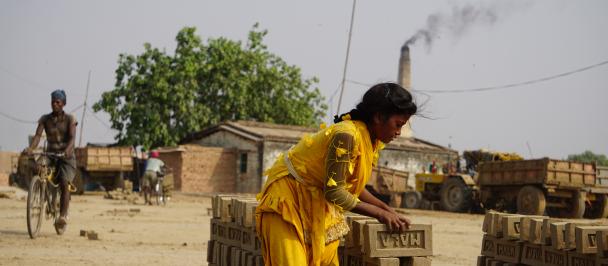Empowering Communities in Kenya: The Rise of Community Data Stewards in Shaping Sustainable Development
February 29, 2024
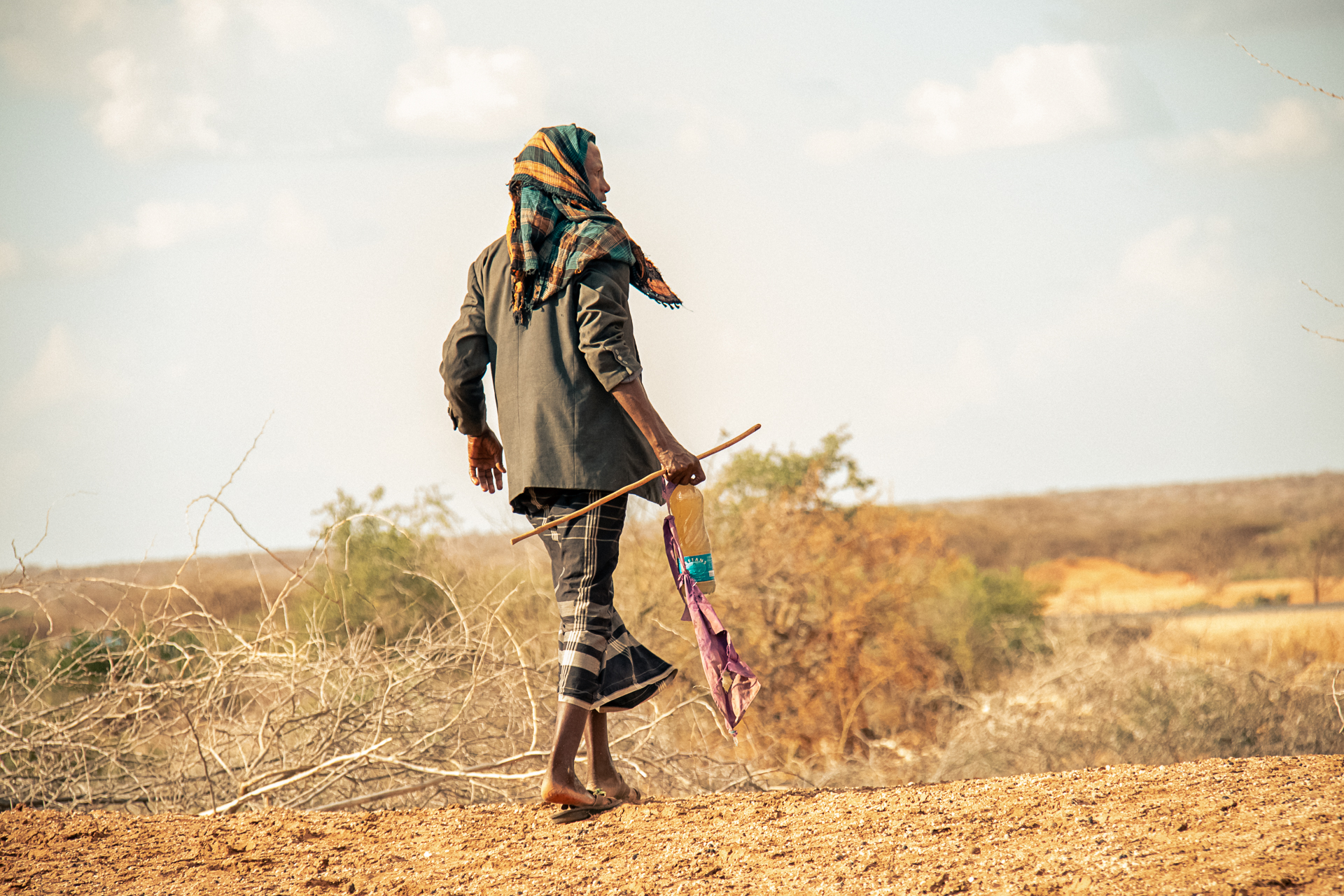
A community member carrying water fetched from a water pan in Tana River County
In the heart of Kipini West ward, Tana River County, Salim Doyo’s mission to map water points took a transformative turn when he discovered a dormant borehole. Determined to restore its functionality, Salim not only documented its attributes but also managed to track down the developer, catalysing a remarkable chain of events which led to the repair of the borehole. With Salim’s initiative and the developer’s response, 30 households can now access clean water once again.
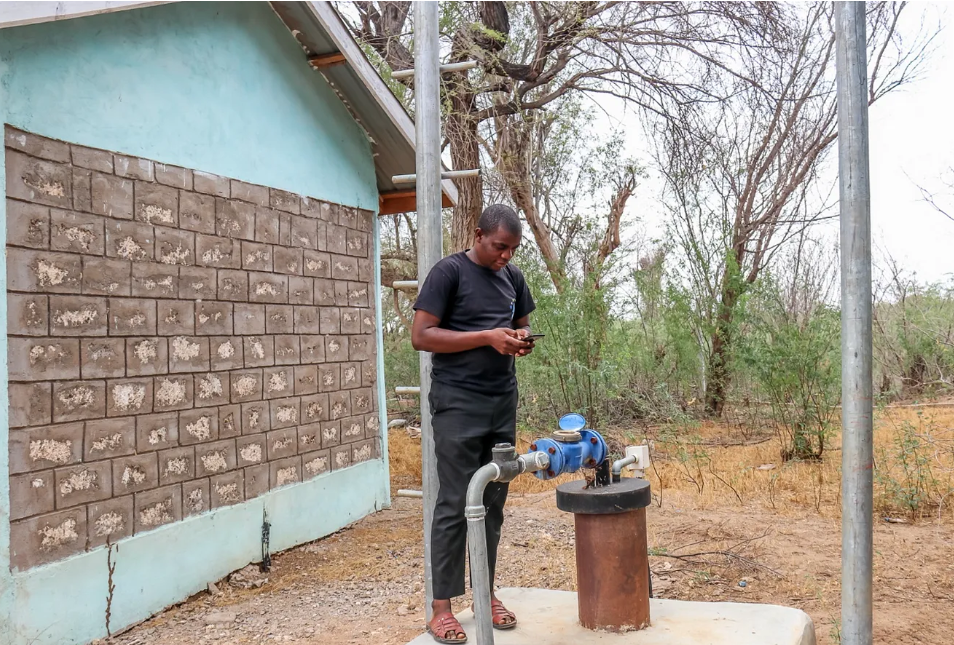
Photo 1: Salim, a community data steward mapping a water point in Tana River County.
Data possess considerable potential to tackle prevailing societal issues not only at the national and county levels, but also in smaller communities and in the lives of individuals. In recent months, the UNDP Accelerator Lab in Kenya, in collaboration with NESTA’s Centre for Collective Intelligence Design and various partners, embarked on a transformative journey, exploring the role of herder-farmer communities in Tana River County as key contributors to generating essential data on water access, levels, and usage.
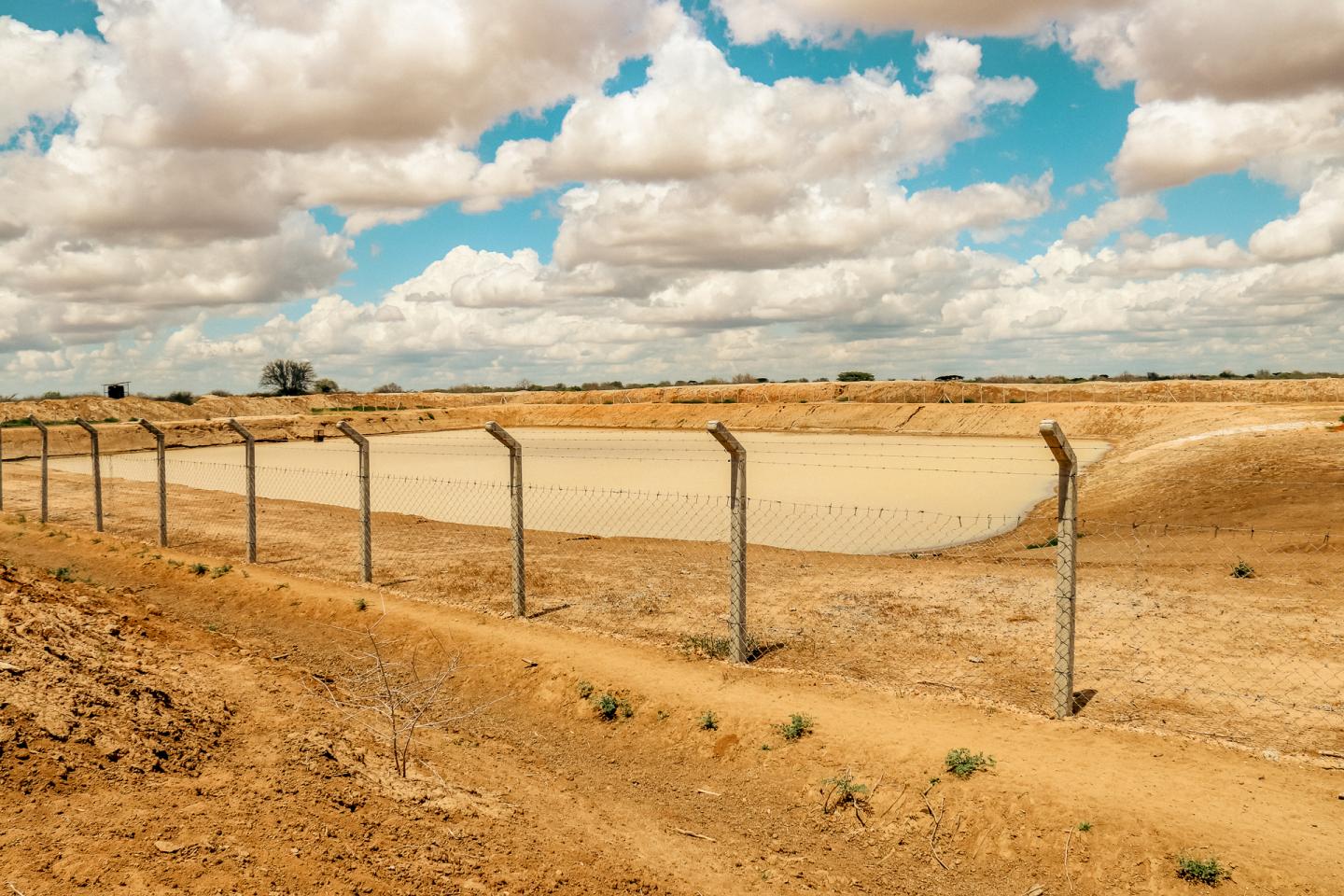
Photo 2: A water pan in Tana North sub-county, Tana River County. Photo credit Michael Kibuku.
This initiative, under the Collective Intelligence for the Climate Action project, aimed to empower communities by leveraging their data to enhance water resource management, advocate for water resource allocation, and improve resilience to climate-related events. To realize this goal, the Accelerator Lab explored a collaborative platform aggregating user-generated content from herders and farmers, satellite data and data sets from multiple government agencies.
The beginning: rethinking data collection
The journey began with a critical examination of previous mapping efforts, revealing the limitations of the commonly used static hazard atlases. Recognizing the need for a dynamic approach, the Lab turned to the principles of collective intelligence, emphasizing citizen-centric methodologies. Engaging herders and farmers in ethnographic research and co-design sessions, the Lab uncovered a crucial insight — the untapped potential of community members as data scouts.
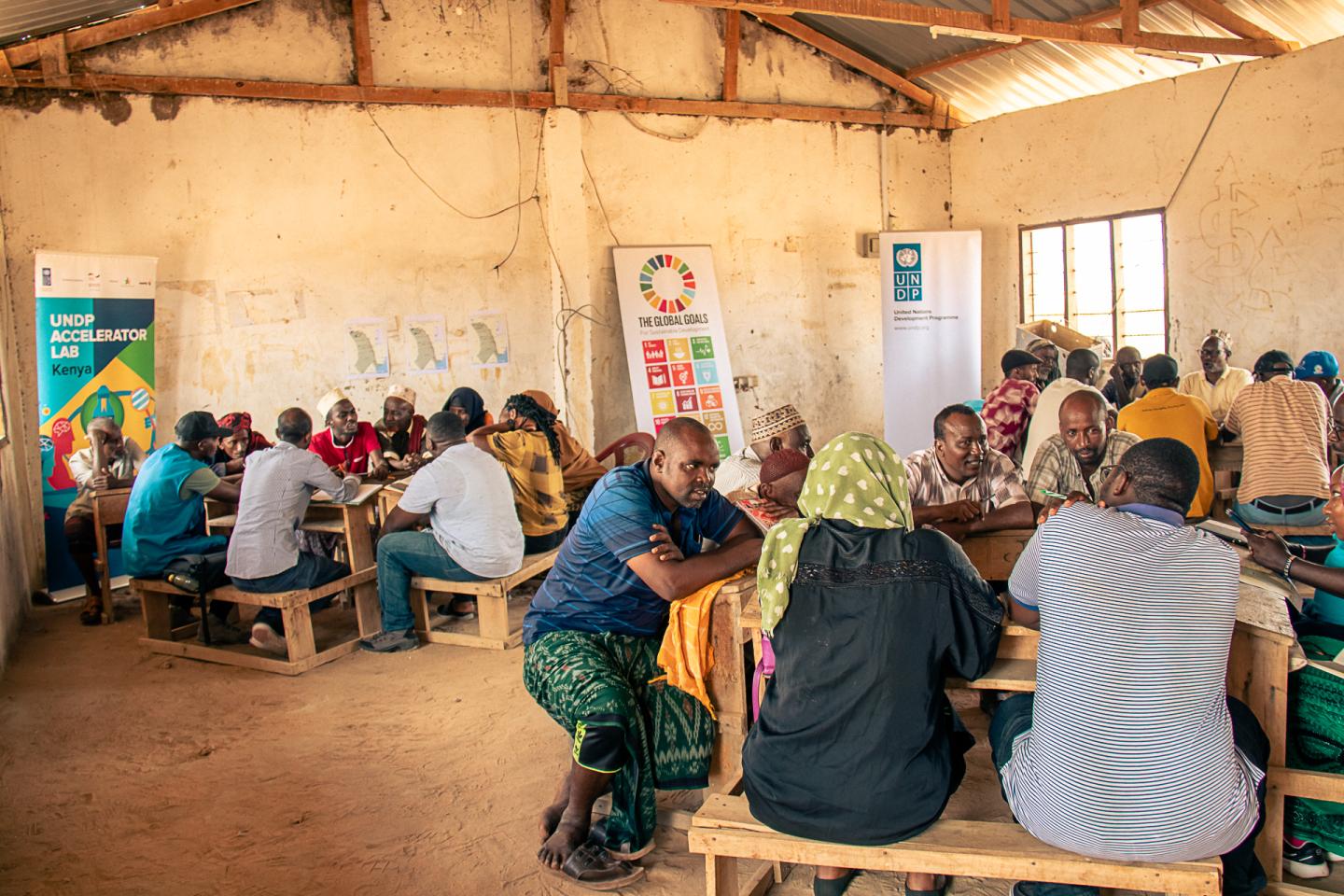
Photo 3: User research with the herder community in Yaqrit village. Photo credit Michael Kibuku.
How do herders navigate and respond to drought?
Livestock migration is a strategic process initiated by elders observing deteriorating livestock health (loss of weight) and shifts in herding patterns, such as a change in arrival times to the boma (An enclosure, especially a palisade or fence of thorn bush, set up to protect a camp, herd of animals, etc.) from 4pm to 8pm within a span of a few days. This prompts elders to inquire why, with herders explaining the need to venture further in search of viable pasture, an early indication of deterioration of pasture.
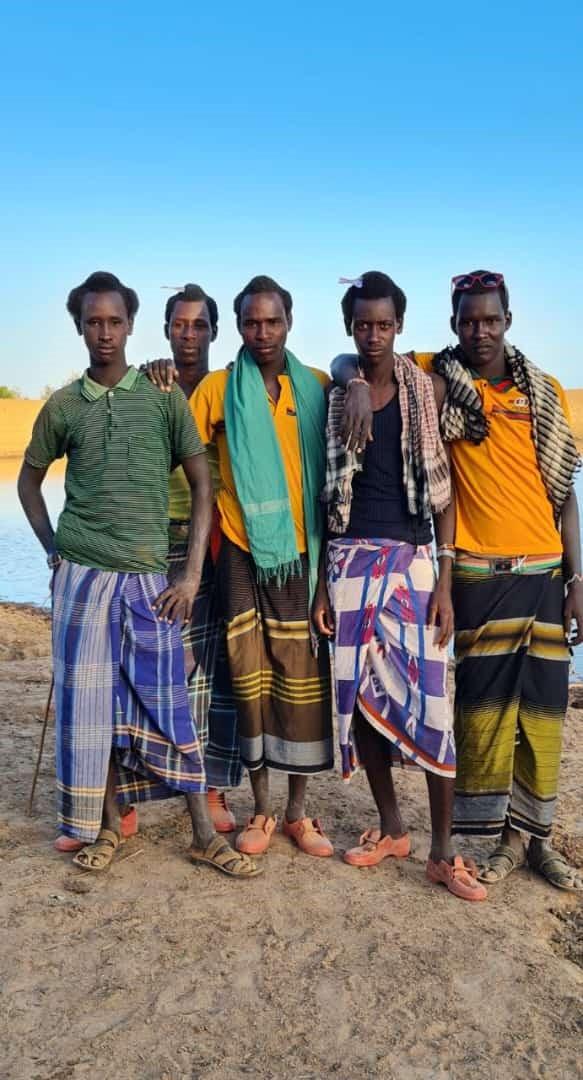
Photo 4: A group of Makals (young herders scouting for water and pasture) posing in front of a mapped water source.
Consequently, a select group of young herders, known as Makal in the local dialect, are chosen to scout water and pasture in established reserves. Previously, Makals would traverse reserves on foot, taking up to a week to relay feedback to the settlement on available pasture and water. However, the introduction of motorcycles and mobile phones has significantly shortened this timeframe to just a day. The decision on which reserve to move livestock to involves careful consideration of factors such as distance, especially for pregnant or lactating cows, the presence of other herds, security, volume of water, the structure of the soil, and quality of the grass. Notably, the dry season grazing areas have remained consistent over the years, prompting elders to rely on Makals to confirm the availability of pasture and water across these different areas.
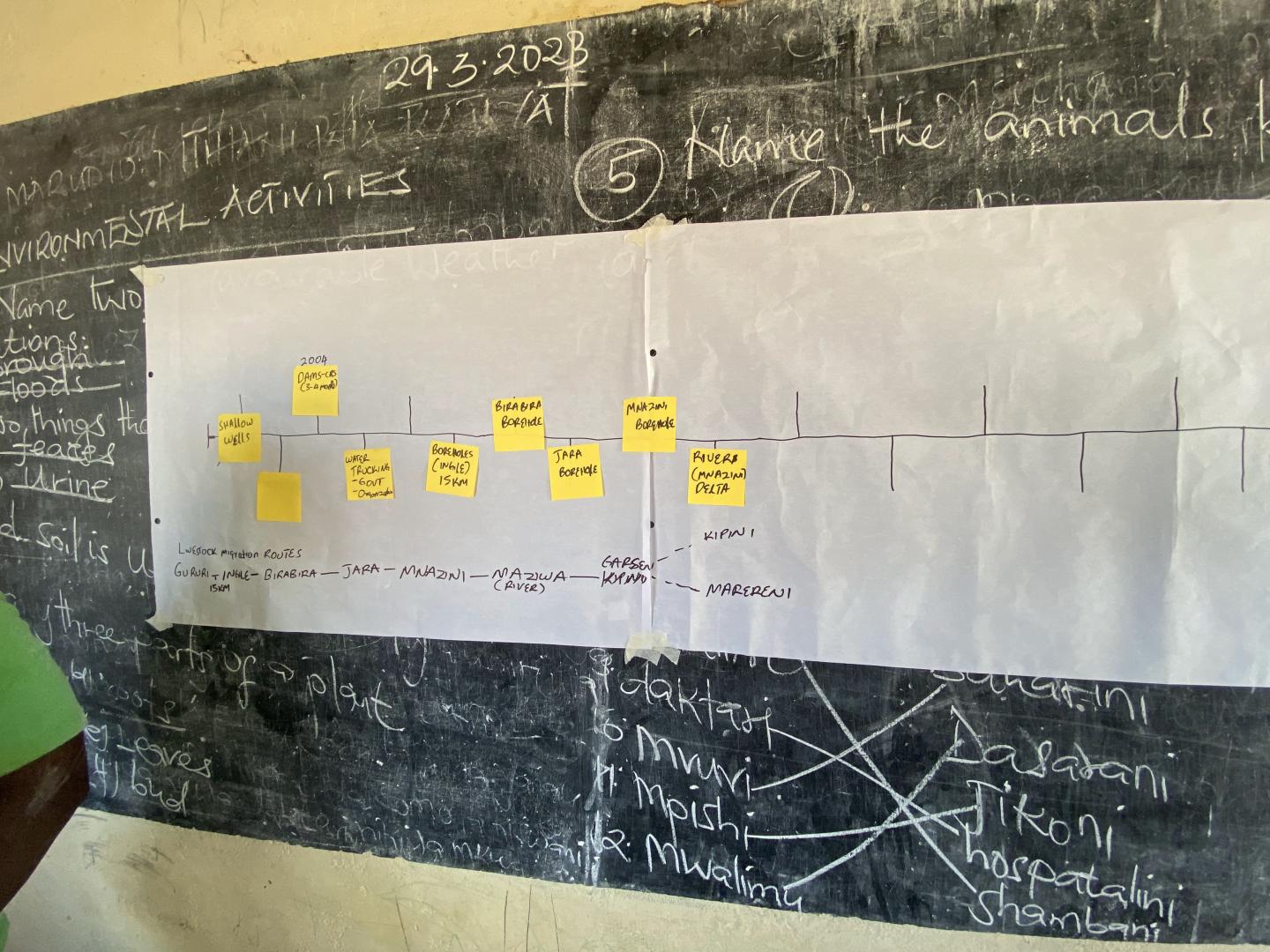
Photo 5: A historical timeline of the water sources in Gururi with the livestock migratory routes. Photo credit Michael Kibuku.
The Accelerator Lab looked to the traditional role of Makals for inspiration and adapted the feedback loop mechanism to fit the collective intelligence model. Community scouts employed mobile phones to map water infrastructure, ensuring that data collection was both real-time and accurate. Drawing from the expertise of Makals in navigating and responding to drought, this approach served as a valuable blueprint for the project.
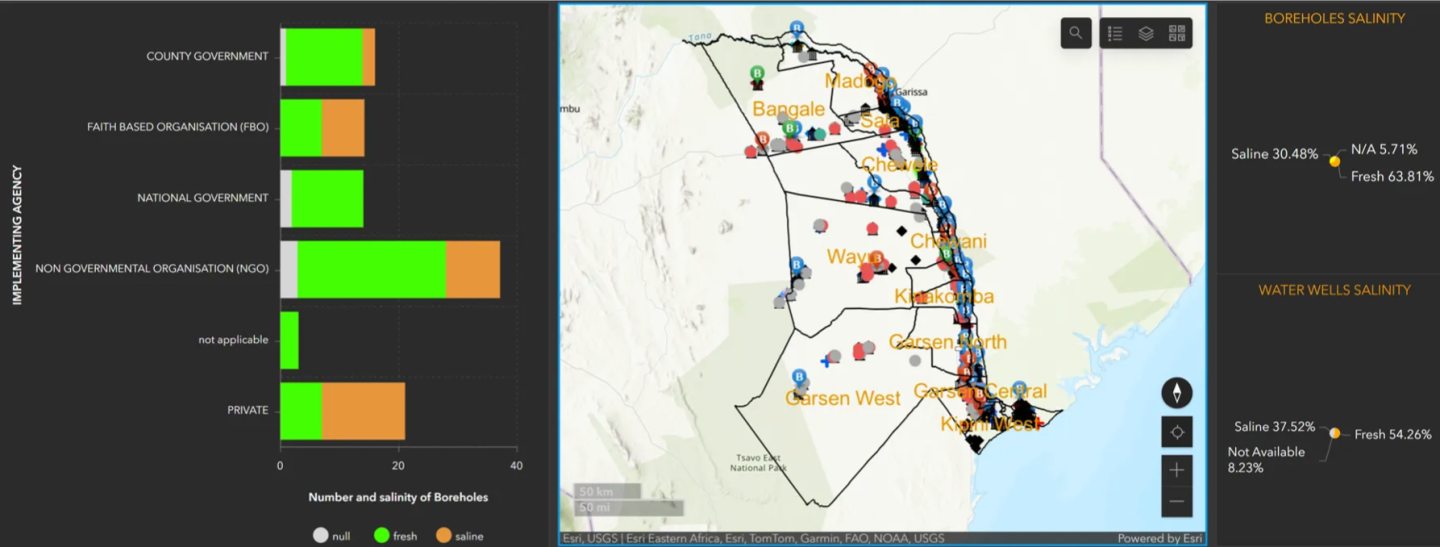
Photo 6: A screen grab of the collaborative platform.
Successes and transformations: from scouts to data stewards
The initial test phase involving seven community scouts demonstrated the transformative potential of community engagement in data collection and use. Notably, Salim, one of the scouts, identified and facilitated the repair of a non-functional borehole, significantly improving water access for 30 households. Building on this success, the project evolved, recruiting 43 (17F:26M) volunteer community data stewards from across Tana River County. Worth noting is that the stewards are not enumerators/data clerks instead the Accelerator Lab recruited the young individuals from all the 15 wards and empowered them to proactively initiate, facilitate, and coordinate data production and ownership toward the public interest.
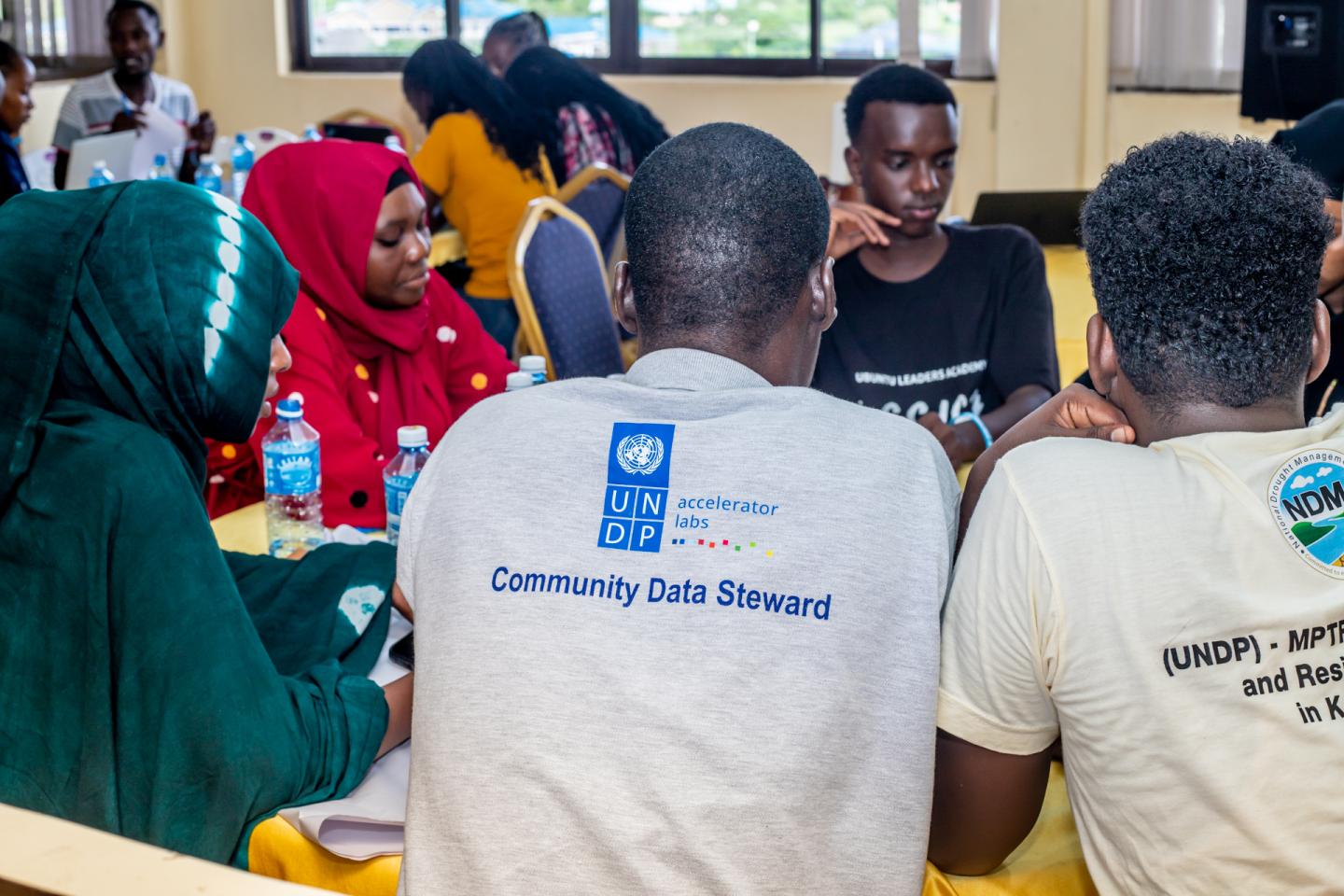
Photo 7: Co-design workshops involving the community data stewards and other stakeholders. Photo credit Michael Kibuku.
This entailed running co-design sessions to design the data collection tools, fieldwork to engage communities and other stakeholders in surveying existing water infrastructure, capturing data on various attributes identified during the data collection design phase, data processing workshops with scouts, academia, CSOs, county and national government and dissemination of the findings to communities and county stakeholders. Engaging them throughout the data value chain helped them to not only identify where water infrastructure was most needed but also prioritize and decide new water infrastructure locations.
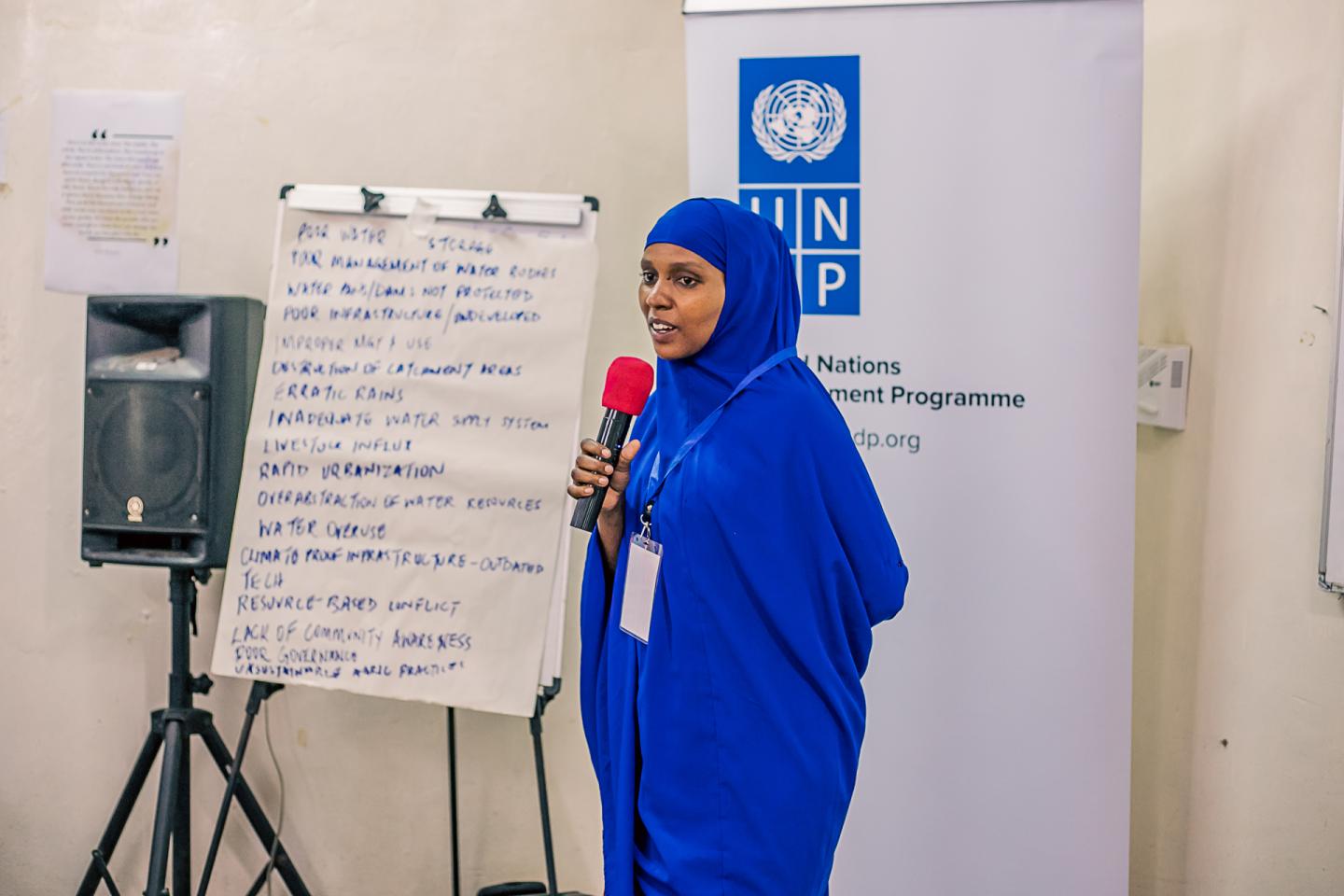
Photo 8: Rukia, a community data steward sharing her experiences with peers during the second test phase. Photo credit Michael Kibuku.
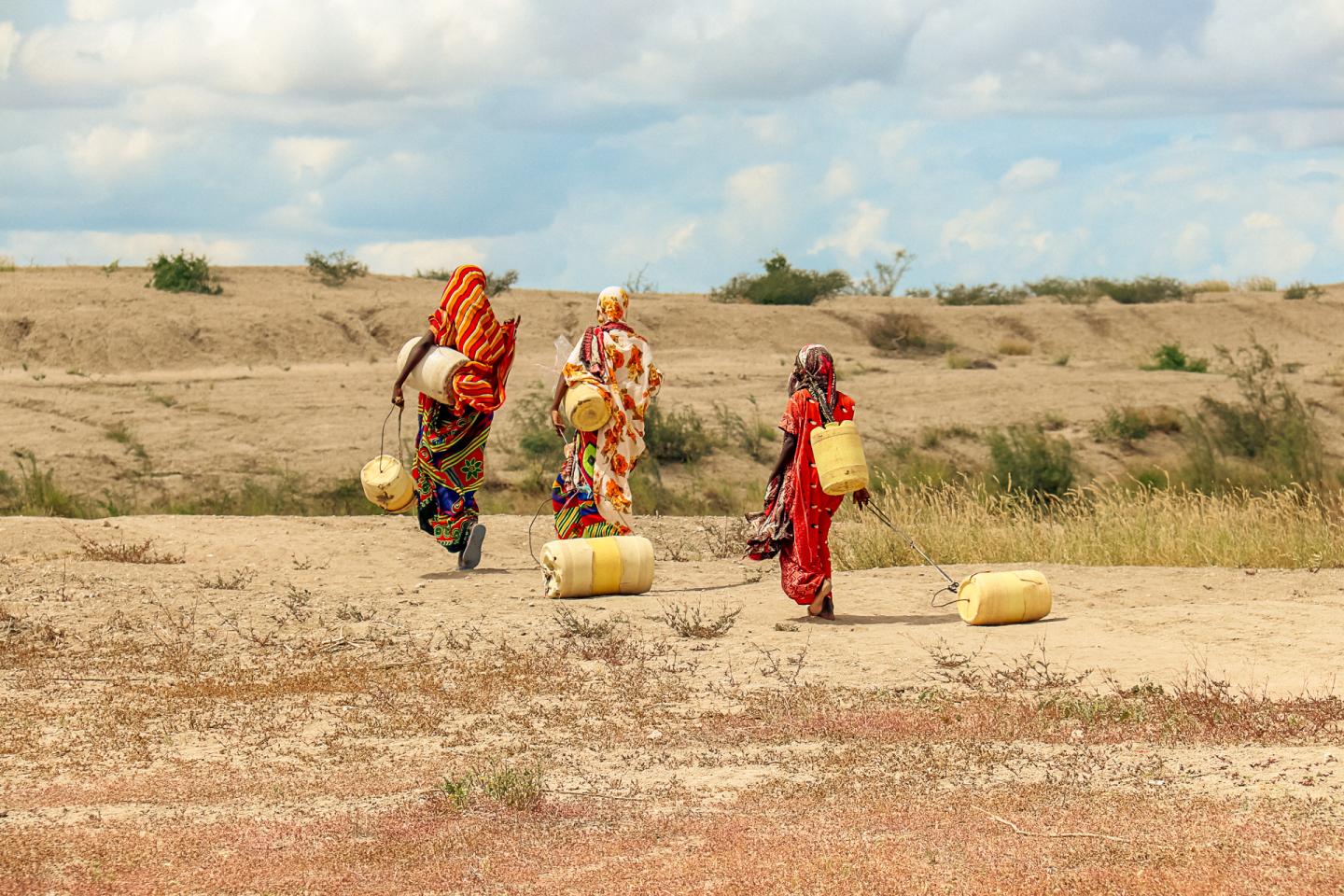
Photo 9: Women heading out to fetch water for their families. Photo credit Michael Kibuku.
Recognizing the gender dimensions inherent in water accessibility, we expanded our recruitment efforts beyond the Makals and recruited 17 women as community data stewards. The decision to involve women stems from an understanding of their contributions and the harsh realities they endure in search for water, such as trekking long distances at the risk of wild animal attacks or potential gender-based violence. By incorporating women as community data stewards, the Accelerator Lab’s aim was to encourage women’s participation in decision-making processes and increase awareness of gender-specific challenges, such as the alarming trend of young girls dropping out of school during drought in pursuit of water.
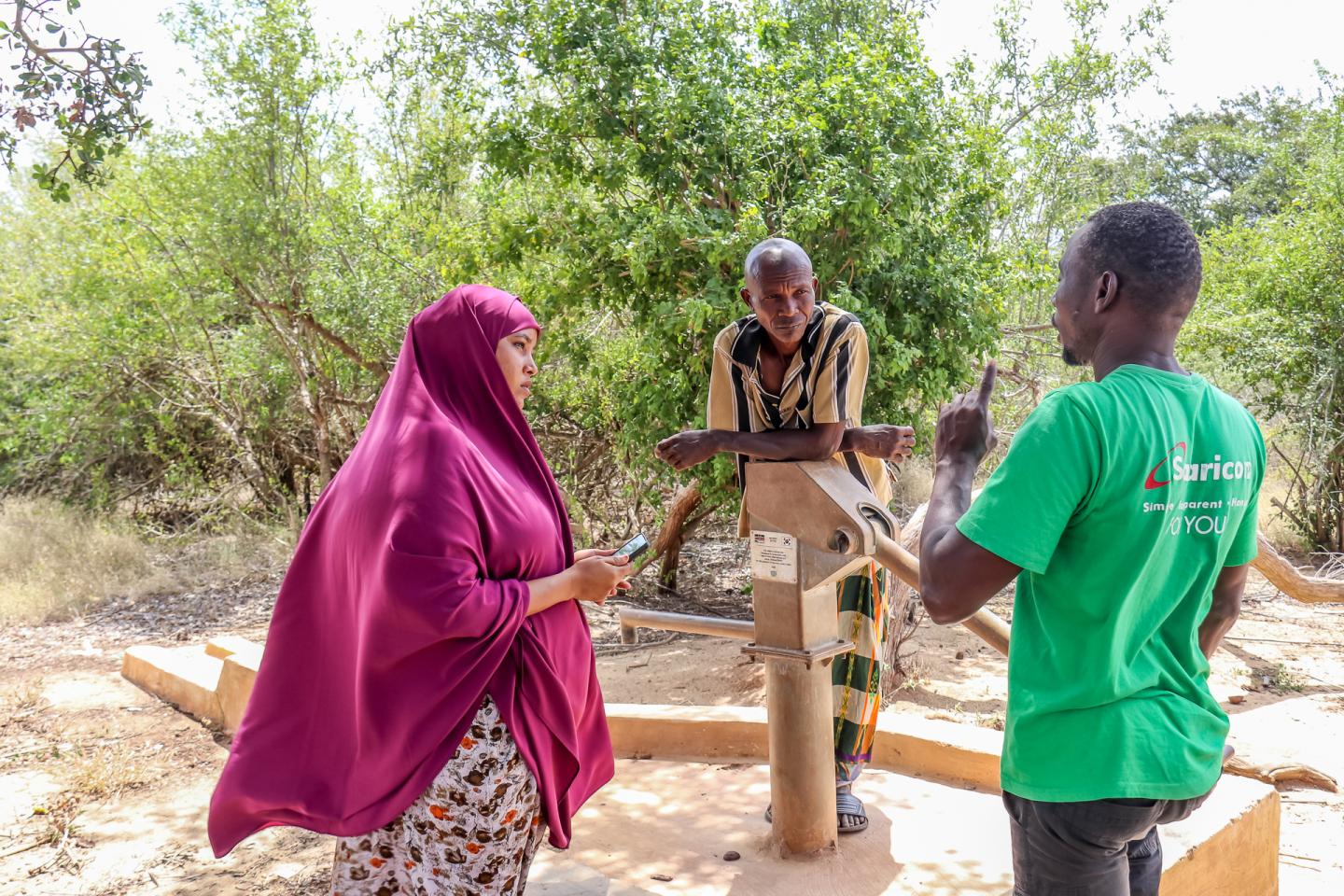
Photo 10: Zeynab, a community data steward capturing attributes of a borehole by interviewing officials of the water users committee. Photo credit Michael Kibuku.
The role of community data stewards
The community data stewards, have contributed to mapping 1,028 water points and 703 social amenities. The data generated has so far informed the development of the draft county irrigation policy and will be useful in the development of the county water masterplan. The data stewards have also surfaced indigenous and local wisdom to water sources and water purification solutions.
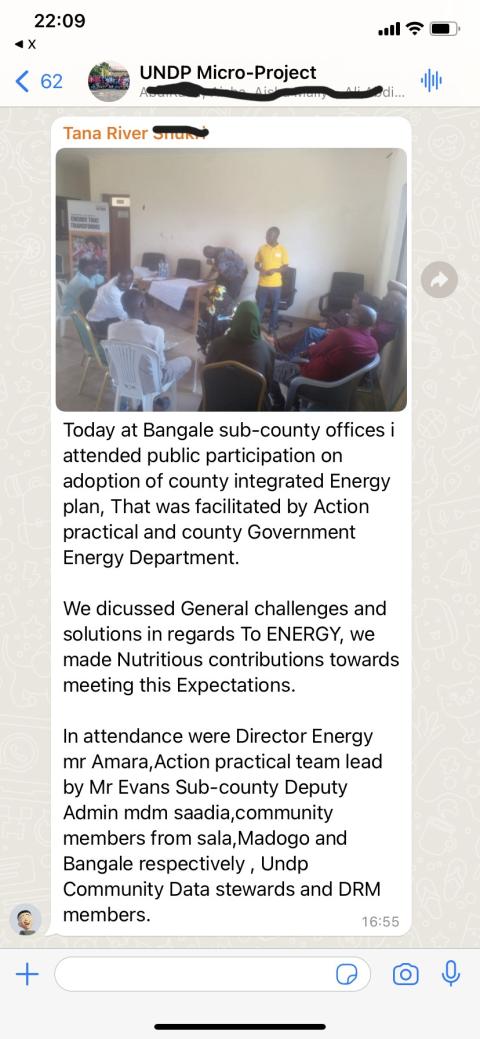
Photo 11: A WhatsApp screengrab detailing the role played by the community data stewards in articulating community needs during a public participation forum.
Beyond water-related initiatives, data stewards have been actively involved in paid projects initiated by other actors in the county such as energy mapping, post-distribution monitoring, and mapping farmers. By identifying community needs and presenting them to relevant actors for resolution, the communities now regard the data stewards as a trusted liaison to the county government and other stakeholders. Their impact is tangible, bridging the gap between data and development. As a direct outcome of their efforts, the communicated data stewards have collaborated with stakeholders such as the Kenya Red Cross, utilizing the data gathered on unclean water sources. Consequently, the data stewards sourced and distributed water purification tablets to 100 households, notably improving access to clean drinking water.
One of the key contributors to the rise of community data stewards was the comprehensive training framework, notably the collaborative design (co-design) sessions. These sessions brought together a diverse set of partners, including government officials, academia, civil society actors, and, most importantly, community members. The synergy created by this multidisciplinary collaboration equipped the emerging data stewards with essential skills and fostered a shared understanding of the purpose behind their data collection efforts. By engaging in meaningful dialogue with various stakeholders, including those directly affected by the data, the training sessions ensured that the community data stewards grasped the significance of their role in shaping sustainable development. Technology also played a part in greatly expanding the possibilities of networking among large groups. Engagement of the community data stewards was maintained by tapping into existing communication channels on WhatsApp. This platform which has representatives from the national and county government, CSOs, academia and community has been a channel for providing real-time, vital feedback to state decision makers as well as seeking solutions to challenges on the ground thus acting as a citizen-sensor network. Such social capital has also been instrumental in helping the data stewards grow in their role.
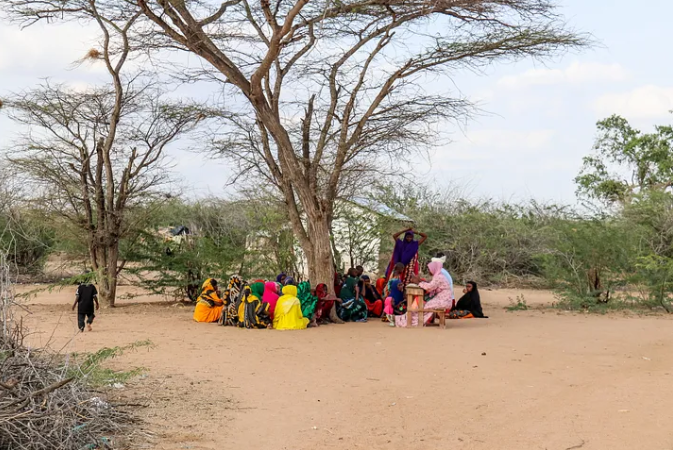
Photo 12: A Focus Group Discussion (FGD) in Nanighi village guided by a female community data steward. Photo credit Michael Kibuku.
Towards professionalized data stewardship
The success in the CI initiative’s second test phase prompts reflection on professionalizing data stewardship in development. The community data steward can be envisioned as an important — and new — link in the data value chain, the first point of contact for data inquiries within communities, discipline-agnostic ambassadors of open data, and essential bridges between stakeholders and communities. This could be one way to address questions of power imbalance in the data economy.
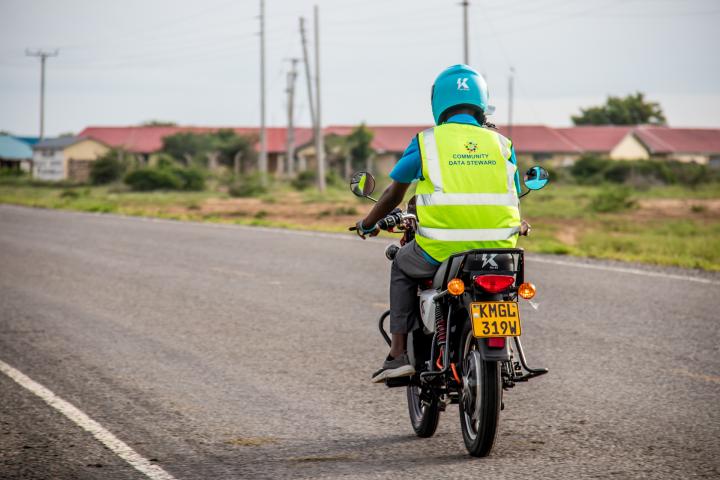
Photo 13: A community data steward with one of the electric motorcycles provided by UNDP to tackle logistical challenges. Photo credit Michael Kibuku.
Considering the pivotal role played by training in nurturing community data stewards, there is a forward-looking imperative to acknowledge the rapid strides in cutting-edge digital technologies, such as big data. As we advance, there emerges a pressing need to empower young individuals within communities with comprehensive data fluency skills, encompassing proficiency in frontier technologies. This will ensure that communities are not only adept at collecting and utilizing data but also well-versed in harnessing the potential of emerging technologies thus creating a generation of data-savvy community members capable of navigating the evolving landscape of digital tools.
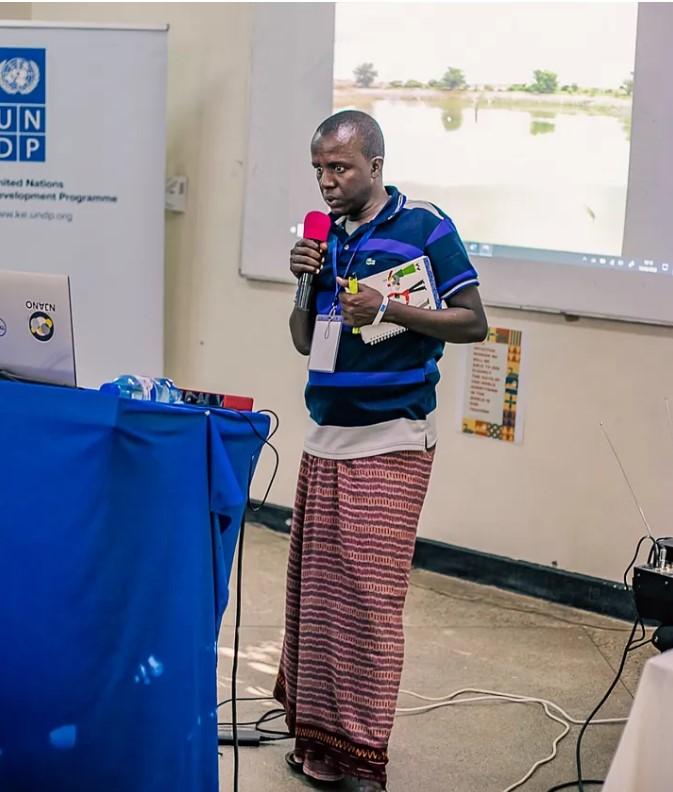
Photo 14: Bocha, a community data steward sharing with participants how they manage their community water pan. Photo credit Michael Kibuku.
Traditional monitoring, evaluation, and learning (MEL) can be one-sided and extractive in how information and findings are shared and used, including not sharing back learnings or findings with individuals and community members. The emergence of community data stewards marks a paradigm shift in data collection and utilization, placing communities at the forefront of their own development. This model not only addresses the challenges of up-to-date data and feedback but also empowers citizens to accelerate their development by actively contributing to decision-making processes. It is a call to action for other development agencies, including the government, to embrace and adopt this inclusive approach for a more sustainable and community-driven future.
Authored by Victor Apollo — Head of Solutions Mapping at the UNDP Accelerator Lab
Victor Apollo is the Head of Solutions Mapping at the UNDP Accelerator Lab in Kenya. In this role, he is responsible for leading lab efforts in deep community immersion to explore, document, and increase understanding on emerging methods of tapping into bottom-up solutions related to sustainable development. Furthermore, he is tasked with designing specific field research and participatory methods to focus on the most vulnerable populations and those not usually engaged in public policy debates on development methods.
The views expressed in this post are those of the author and in no way reflect those of UNDP.

 Locations
Locations



